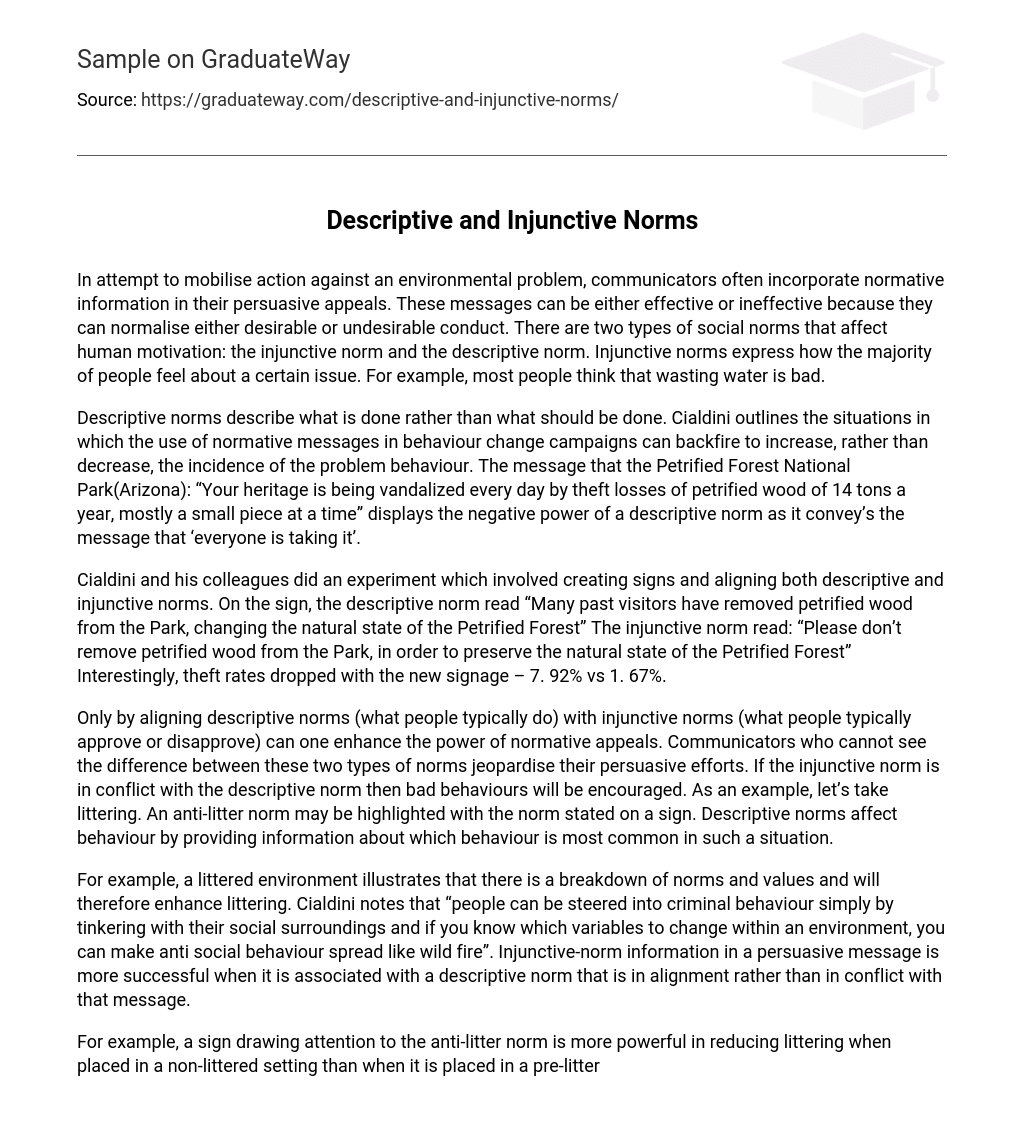In order to promote action against environmental issues, communicators often include normative information in their persuasive appeals. These messages can be effective or ineffective, as they can either normalize desirable or undesirable behavior. There are two types of social norms that influence human motivation: the injunctive norm and the descriptive norm. Injunctive norms represent the attitudes of the majority towards a particular issue. For instance, the majority believes that water wastage is negative.
Descriptive norms focus on describing current behavior, rather than prescribing what should be done. According to Cialdini, the use of normative messages in behavior change campaigns can sometimes have the opposite effect and increase occurrences of the problem behavior. An example that illustrates this is the message displayed at the Petrified Forest National Park in Arizona, which states: “Your heritage is being vandalized every day by theft losses of petrified wood of 14 tons a year, mostly a small piece at a time.” This message exemplifies the negative influence of descriptive norms, as it suggests that ‘everyone is doing it.’
Cialdini and his colleagues conducted an experiment that included the creation of signs that incorporated both descriptive and injunctive norms. The sign stated that many previous visitors had taken petrified wood from the Park, thus altering the natural state of the Petrified Forest. However, it also urged visitors not to remove petrified wood from the Park in order to preserve its natural state. Remarkably, the introduction of these signs led to a decrease in theft rates, dropping from 7.92% to 1.67%.
The power of normative appeals can only be enhanced by aligning descriptive norms (what people typically do) with injunctive norms (what people typically approve or disapprove). If communicators cannot distinguish between these two types of norms, their persuasive efforts are at risk. When the injunctive norm contradicts the descriptive norm, it promotes negative behaviors. Littering can serve as an example. An anti-litter norm can be emphasized through signage stating the norm. Descriptive norms influence behavior by providing information about the most common behavior in a given situation.
For instance, if the environment is littered, it shows that norms and values are not being upheld and will consequently encourage more littering. According to Cialdini, it is possible to direct individuals towards criminal actions by manipulating their social environment. By identifying the specific variables to modify within an environment, one can effectively trigger the rapid spread of anti-social behavior. In a persuasive message, pairing injunctive-norm information with a descriptive norm that aligns with the message yields greater success compared to conflicting norms.
Environmental interpreters increasingly recognize the importance of descriptive norms in deterring littering. An anti-litter sign is most effective when placed in a litter-free environment, rather than an already littered one. It is still possible to communicate that a specific activity has negative consequences for both humans and the environment, without implying social acceptance of engaging in this harmful activity.





